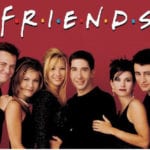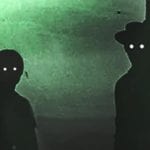 Weird Stuff
Weird Stuff  Weird Stuff
Weird Stuff  Mysteries
Mysteries 10 Tragic Disappearances and Deaths in Joshua Tree National Park
 History
History 10 Ways Childhood Really Sucked in the Old West
 Music
Music 10 Name Origins of Famous Bands from the 1990s
 Religion
Religion 10 Biggest Turnarounds by the Catholic Church
 Weird Stuff
Weird Stuff 10 Unbelievable Times Laws Had Unintended Consequences
 Humans
Humans Ten Historic Women Who Deserve Way More Credit Than They Got
 Movies and TV
Movies and TV 10 Films That Spawned Major Lawsuits
 History
History Ten Times Towns Were Wiped Off the Face of the Earth
 Creepy
Creepy 10 of the Most Disturbingly Haunted Public Houses in the UK
 Weird Stuff
Weird Stuff 10 Niche Subcultures That Are More Popular Than You Might Think
 Mysteries
Mysteries 10 Tragic Disappearances and Deaths in Joshua Tree National Park
 History
History 10 Ways Childhood Really Sucked in the Old West
Who's Behind Listverse?

Jamie Frater
Head Editor
Jamie founded Listverse due to an insatiable desire to share fascinating, obscure, and bizarre facts. He has been a guest speaker on numerous national radio and television stations and is a five time published author.
More About Us Music
Music 10 Name Origins of Famous Bands from the 1990s
 Religion
Religion 10 Biggest Turnarounds by the Catholic Church
 Weird Stuff
Weird Stuff 10 Unbelievable Times Laws Had Unintended Consequences
 Humans
Humans Ten Historic Women Who Deserve Way More Credit Than They Got
 Movies and TV
Movies and TV 10 Films That Spawned Major Lawsuits
 History
History Ten Times Towns Were Wiped Off the Face of the Earth
 Creepy
Creepy 10 of the Most Disturbingly Haunted Public Houses in the UK
Top 10 Most Confusing American Novels
Novels are a beloved way to escape into the past and imaginary worlds we can only hope to encounter in real life. But sometimes, as much as we love to read the classics, they can be awfully hard to crack. These American masterpieces, whether westerns, science fiction, or feminist works, may have been written during different times by different people, but they all come from the school of “Confusing.” If you’ve read any of these books, you deserve praise—they are challenging, but rewarding. If you understand them after one read, you have earned some bragging rights.
Here are the top 10 most confusing American novels.
10 The Sound and the Fury (1929) by William Faulkner
After finishing “The Sound and the Fury,” William Faulkner told Ben Wasson, his friend and agent, “Read this, Bud. It’s a real son-of-a-bitch… This one’s the greatest I’ll ever write.” While the novel didn’t catch on with readers immediately, many agreed with his remarks later. Today, “The Sound and the Fury” is considered one of the greatest American novels of all time.
For those who read the novel for the first or even second time, Faulkner’s novel is still a real son-of-a-bitch. The story is told from Benjamin “Benjy” Compson’s perspective, a man described as “intellectually disabled.” The novel is extremely puzzling for readers as the narrative style is disjointed, lacking a clear chronological timeline.
As the novel progresses, two other narrators and a third-person viewpoint section arise, adding more tension to the conundrum. The persistent, if not frustrating, nonlinear plot and the stream-of-consciousness style make the novel a laborious task. If you decide to read the novel for relaxation, you might end working yourself into a frenzy instead.
But if you feel up to the challenge, the novel tells a captivating story about the fall and destruction of the aristocratic Compson family.
9 The Recognitions (1955) by William Gaddis
Jonathan Franzen once wrote that “The Recognitions” was one of the most “difficult” books he’d ever read—he’s not the only one. “The Recognitions” is a “monster” of a book with a total of 956 pages decorated with small print, making the task all the more daunting. From reviews that greeted the debut novel by William Gaddis, it became apparent that many were overwhelmed to finish it in its entirety.
Like Jonathan Franzen, the book’s biggest promoters remarked that reading it in its entirety almost feels like a punishment. In almost ironic opposition to its encouraging title “The Recognitions,” it’s difficult to recognize what Gaddis intended his readers to feel while reading the work. While the misunderstood novel tells the tale of forgery, it ends up infuriating many who blame it for terrifying them with fatigue.
William Gaddis’ choice of complex structure makes the novel intellectual and for most readers, getting lost within the lengthy manuscript is not improbable. The exhaustive focus on the corruptions of the art world makes the novel an enlightening masterpiece that is virtually impossible to imitate.
8 Underworld (1997) by Don DeLillo
Don DeLillo’s “Underground” is a critically acclaimed story of America during the second half of the 20th century. While the novel features most of DeLillo’s trademark techniques, such as his cinematic storytelling and surrealism, many find it awfully confusing.
For instance, “Underworld” employs a nonlinear format that jumps timelines from the 1950s to the 90s. With a plotline that intertwines characters, themes, and events from multiple years, it’s easy to get lost in DeLillo’s universe.
Yet, for those who are intrigued by the wonderful accuracy with which the author introduces his events, from the Giants-Dodgers game to the Soviet nuclear test, the pages can be overbearing. Funneling through 827 pages is a tough task and shows DeLillo intends to leave nothing out.
Still, the novel is a classic work considered central to understanding the second half of the 20th century.
7 Nightwood (1936) by Djuna Barnes
Djuna Barnes’s “Nightwood” is as strange as its name suggests and for fresh readers, the trickery starts from its format. The main deception is that while it resembles a novella, it’s actually a semi-modernist gay poem that strives to be unforgettable, exotic, and dark.
T.S. Eliot, who wrote the preface for the novel, confirmed that the novel was impenetrable. Eliot remarked, “Only sensibilities trained on poetry can wholly appreciate it.” While reading it, readers can’t help but feel enthralled by the rhythmic proclivities of the manuscript that make it all the harder to comprehend.
Still, “Nightwood” rightfully earns its status as a critically acclaimed masterpiece for its vividness and focus on homosexuality. Beneath “Nightwood”’s tense exterior, the narrative is demanding, with a flow that is almost addictive. For introverts, the novel is bound to feel like home, screaming for attention through a quiet boldness.
6 Absalom, Absalom! (1936) by William Faulkner
William Faulkner is no stranger to complex writing styles and appearing on this list twice is really saying something. Faulkner’s title, “Absalom, Absalom!” sounds like a repetition but when reading the book, this is probably the shortest phrase you’ll encounter.
The most confusing element in the novel is Faulkner’s penchant for lengthy sentences that ignore conventional punctuation techniques. In “Simply Faulkner,” Philip Weinstein remarks on the author’s peculiar choices, suggesting that Faulkner uses long and complex sentences intentionally. Weinstein says that since he expresses then human experience, ordinary language is inadequate to capture its entirety.
Another strange choice is that just as in his 1929 novel, “The Sound and the Fury,” the novel features another familiar character, Quentin “Benjy” Compson. For Faulkner readers, Benjy is not the most reliable storyteller and by narrating from his perspective, getting the full picture is a struggle. The truth is obscured by the different narrative points of view and characters that readers can’t connect to.
The work might be confusing but the story is meaningful in its focus on the post-Civil War period. With themes like racism and incest driving the conflict forward, the story is intriguing and ruthless.
5 Blood Meridian (1985) by Cormac McCarthy
Just as the title suggests, “Blood Meridian” is so bloody you would swear that violence is the main theme. The story follows a protagonist only identified as “the kid” who travels with a vicious band of scalp-hunting marauders of the Wild West.
On first reading, the novel’s unspeakable violence is impossible to ignore but this is where the praise-worthy attributes get blurry. While McCarthy’s prose is stunning, reading it demands quite a few breaks since the plot style is difficult. Critics describe the plot as “scarce” and “expansive,” but these terms don’t capture its extensive breadth.
McCarthy’s novel is so complicated that the author himself feels that turning it into a movie “would be very difficult to do.” If it’s ever made into a movie, the payoff would be incredible but not before making the screenwriters go mad trying to find a straight format. The novel’s lack of plot structure, action, or climax makes it a director’s nightmare.
4 Moby-Dick (1851) by Herman Melville
I know what you’re thinking, “Moby-Dick” is confusing? While “Moby-Dick” or “The Whale” is one of the widely read books by an American author, it’s a hard reading on some levels. Unlike most novels, Melville’s novel was not created for the feeble reader, and to understand it, “one must read it.”
Heman Melville’s novel takes readers out into the open sea, telling a story of despair involving Captain Ahab and a great white whale. While the confrontation between the two drives the narrative along, the work is filled with everything about whaling talk and hyper subtle imagery that demands patience.
For advanced readers, reading the novel from one end to the other is reminiscent of meeting a long-lost friend but not so for first-time readers. To enjoy the book, a slower pace rather than a rushed one is better. Chapter 32, “Cetology” is particularly tasking since outwardly, it seems as if it’s focusing on whales, creatures that most readers just don’t care about. In reality, the chapter focuses on libraries, books, and classification systems, which make the work more intriguing.
3 Infinite Jest (1966) by David Foster Wallace
“Infinite Jest” was acclaimed as one of the most influential books of its time, earning David Foster Wallace a place among the greats. While the 1,100-page novel is Wallace’s magnum opus, the work has proven tedious to many readers who must suffer through its eccentric narrative structure.
“Infinite Jest” is a multi-layered novel and within the text, readers interact with creativity and originality in a way they haven’t before. In amazing foresight, Wallace includes 388 endnotes that unexpectedly have their own footnotes to help readers as they go along. These stylistic choices reveal an attempt by the author to remind the readers that the book is a serious undertaking.
On a critical level, many agree that Wallace’s novel is brilliant but everyone agrees that it’s also a confusing read. The only good thing is that there’s no wrong way to read the novel. Whether you start from front-to-bark or read it skipping around you’ll still get the point somehow.
2 The Female Man (1975) by Joanna Russ
In “The Female Man,” Joanna Russ takes it upon herself to craft a feminist science fiction novel that fights for the cause. Russ brings out popular issues in feminist discourse by bringing together four women from different worlds, literally.
The novel’s confusion emerges from its bizarre format. Russ divided her story into nine, chaptered sections. While a conventional writer would allow their characters to tell the story from their perspective, Russ does not. Her mix up of points of view just complicates everything.
Across the nine sections, the viewpoint focuses on single characters but the narration switches across characters and time periods. As you read the novel, it’s confusing to know who’s speaking, a mix-up that complicates attempts to decipher it.
Perhaps, the difficulty plays into Russ’s intentions as she hopes to address womanhood through a new perspective.
1 Catch-22 (1994) by Joseph Heller
This list has some very interesting books that have confused American readers for decades. “Catch-22,” a novel by Joseph Heller, tops the list with its non-linear structure that relives the nightmares of World War II.
Heller’s “Catch-22” was revolutionary in that he coined the term—Catch-22—to describe the internal tussles one of his main characters undergoes in the novel. Still, despite gifting the world with a cool-sounding phrase for dilemmas, “Catch-22” is confusing. In the work, Heller blurs the line between reality and farce, making it impossible to distinguish real events from parodies.
The nonlinear storytelling and wide array of narrators that crisscross each other further present a challenge for readers. The storyline skips back and forth, robbing readers of any time to appreciate characters, their backstories, and preceding events. But even with the disheveled storytelling format, the novel blends into Heller’s mockery of the war’s necessity and consequences.
Just as the Second World War was chaotic, the novel embraces chaos to describe the turmoil that faced unwilling participants.








